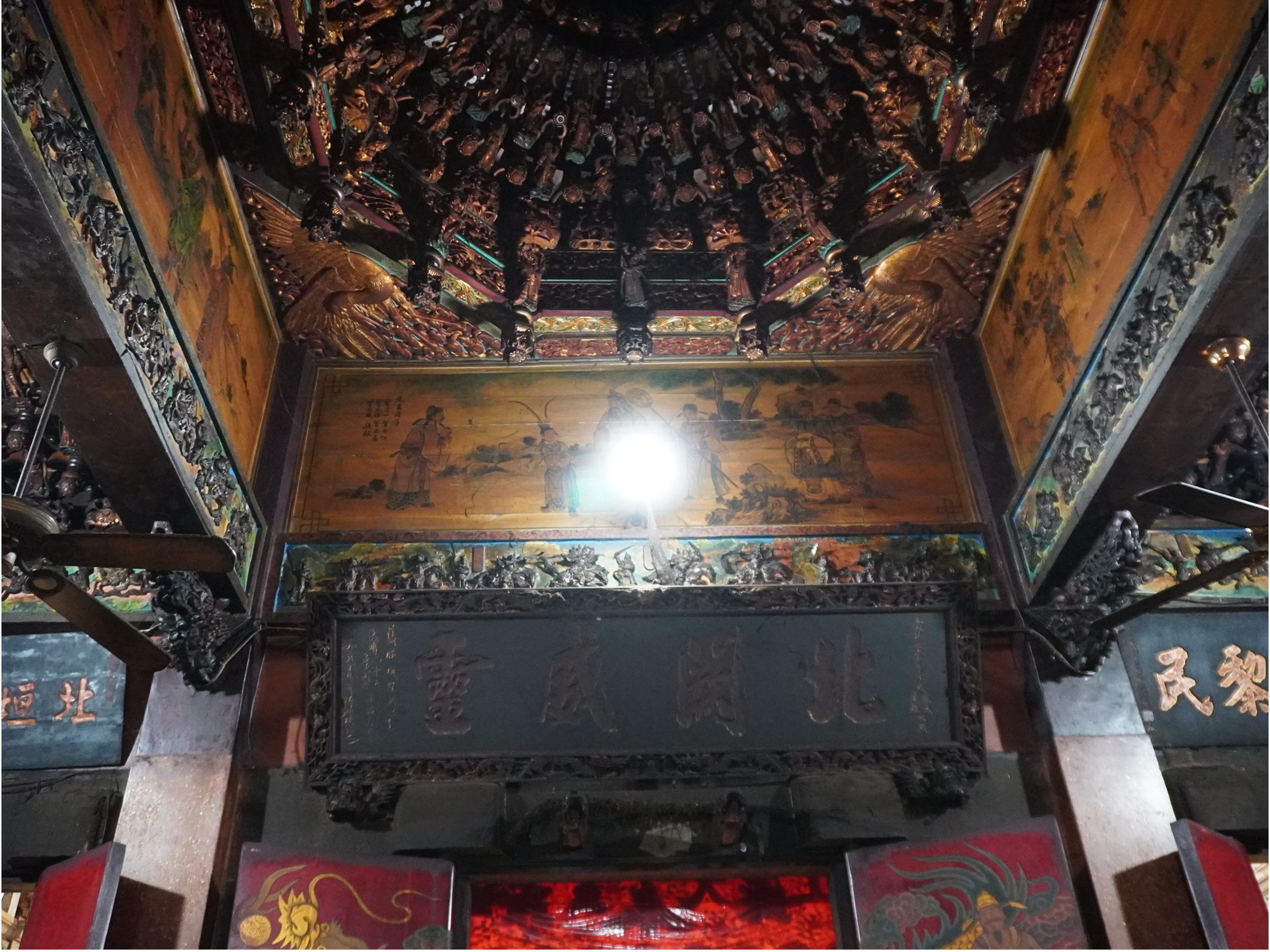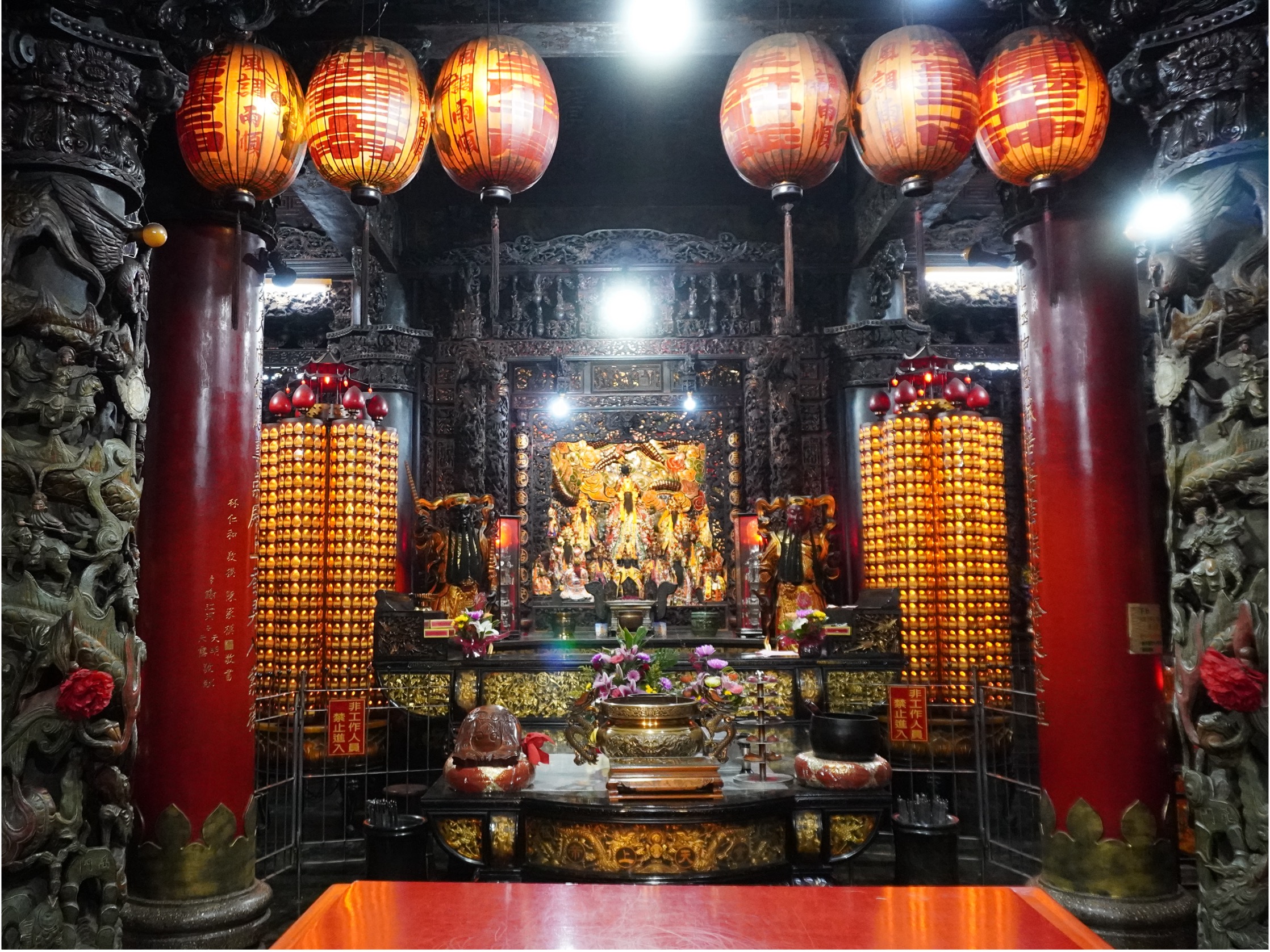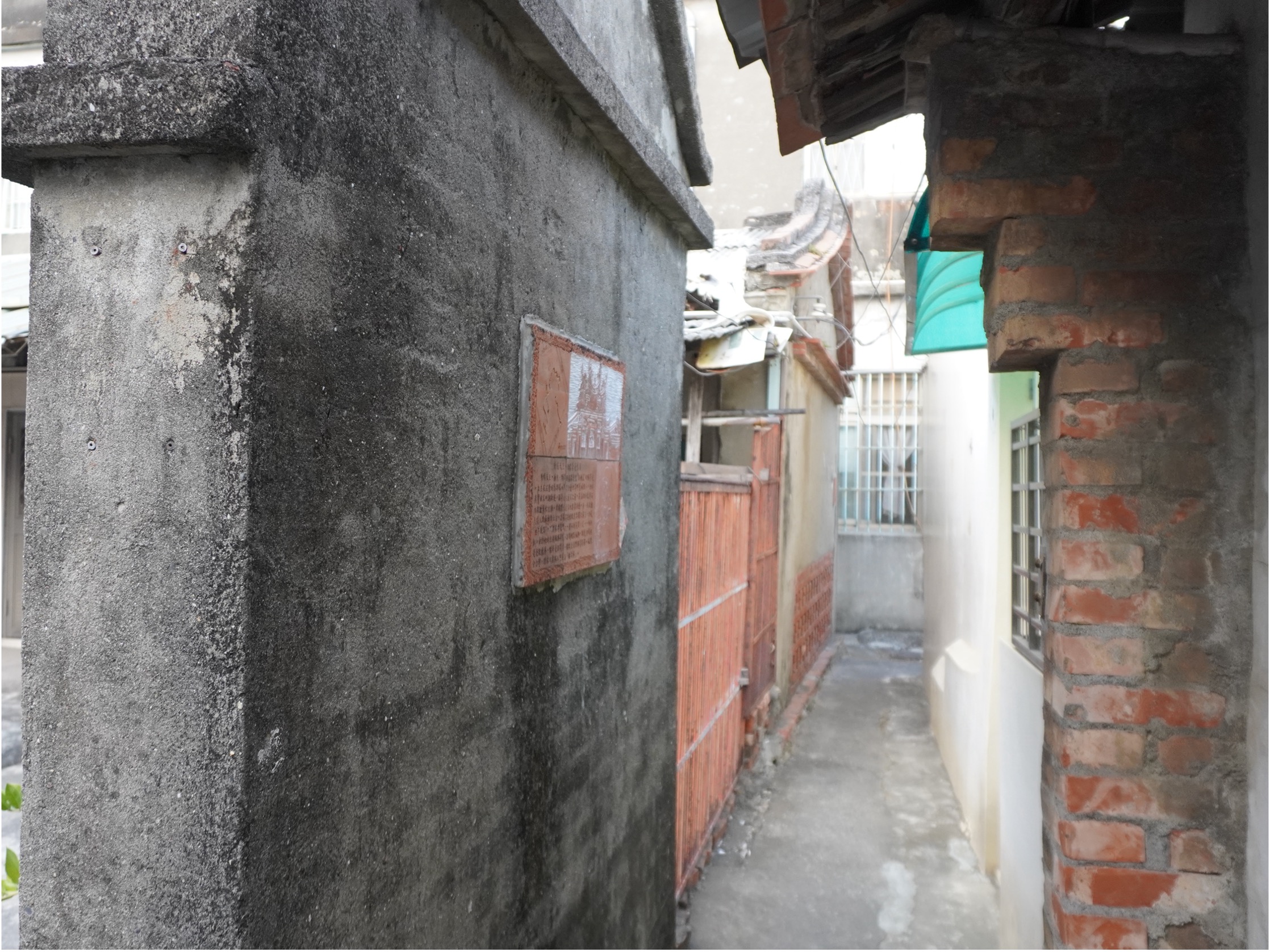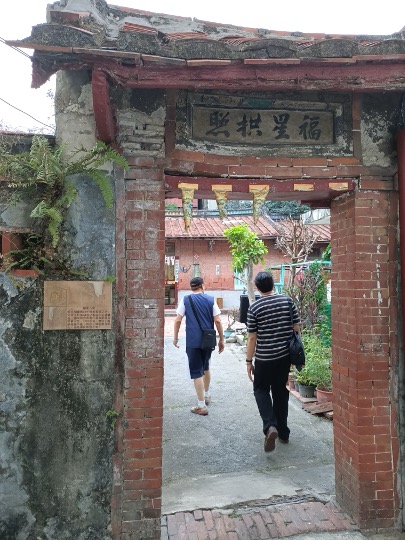by 柯凱森
In the Zuoying area, temples and ancient houses with a long history carry rich life stories. Among them, the Yuandi Temple by the Lotus Pond stands out as an undeniable center of faith, bearing the sincere beliefs and poignant tales passed down through generations. To capture the unique cultural essence of this land, on the day of the interview, we had the privilege of interviewing Mr. Lai, a retired military officer. Despite being in his seventies and having retired for many years, he still possesses the robust physique of his military days. In his expressions and words, one can deeply sense his profound affection and nostalgic reflections for this piece of land.

預退軍官賴大哥帶領著作者穿梭於巷弄間
Mr.Lai guided us through the narrow alleys of ancient houses, humbly sharing that he only occasionally comes back to stroll around, lamenting the swift passage of time and the unpredictable nature of everything. Although he has now moved to the Wukuaicuo, a bit away from the Yuandi Temple, he often returns to visit this place, weaving through the alleys, recounting memories that feel as if they happened just yesterday. It's like engaging in a dialogue with history, and we, too, find ourselves immersed in Mr. Lai's nostalgic journey, wandering in the area around the Yuandi Temple, filled with historical stories and cultural depth.
The ancient buildings lining the alleys, marked by the sedimentation of time, exude a serene atmosphere reminiscent of a time tunnel. Curiously, I asked Brother Lai if these ancient houses also share an inseparable connection with the Yuandi Temple.
With brisk steps and laughter, he enthusiastically began recounting the history of the Yuandi Temple. Apparently, the temple was established during the Jiaqing era of the Qing Dynasty and has a history spanning several centuries. The temple not only symbolizes local faith but also carries the emotional ties of many residents' families. Mr. Lai respectfully described the locals' devout worship of Yuandi and the role the temple has played throughout history.
This is a sacred place where villagers pray for favorable weather and abundant harvests. During festivals and the birthday celebration of the deity, villagers flock to the temple grounds, participating in religious ceremonies to pray for the well-being of the villagers and the safety of those who venture out for work," Mr. Lai's voice carried a hint of contemplation, as if he were savoring that distant time. With his expression, it felt as if I, too, had grown up in front of the Yuandi Temple, experiencing the blessings and festivities of the celebrations, with memories lingering endlessly.
Anecdotes about North Pole Great Emperor and local tales
The Yuandi Temple, formerly known as the "North Pole Great Emperor Temple" and commonly referred to as the "Zuoying Grand Temple," venerates the "Xuantian Shangdi," also known as the "North Pole Great Emperor." Mr.Lai eloquently narrated the history of this temple, tracing its origins back to the 20th year of the Ming Dynasty's Yongli era during the period of Zheng Chenggong's Taiwan recovery. Construction began in the 53rd year of the Kangxi era and, after multiple renovations, it was eventually renamed the "Yuandi Temple." Due to its powerful spiritual influence, capable of exorcizing demons and curing ailments, the temple gained devout followers in Taoism, becoming the guardian deity of Zuoying residents. Positioned in the old "Fourth Jia " central area, it holds significant and profound meaning for the development of local temples.
Legend has it that Xuantian Shangdi, initially a butcher, demonstrated his commitment to cultivation by disemboweling himself and washing his internal organs in a river to atone for sins, ascending to godhood as Xuantian Shangdi or colloquially known as the "God of Heaven." However, the remaining intestines and stomach transformed into malevolent spirits—a turtle and a snake—posing threats to all beings. In response, Xuantian Shangdi, wielding the Seven-Star Sword borrowed from Lu Dongbin, descended to subdue the turtle and snake. He stepped on them, ensuring they would never rebel. The statue of Xuantian Shangdi in the middle of the Lotus Pond, holding the Seven-Star Sword, stands as the tallest water deity statue in Southeast Asia, with the turtle and snake beneath his left foot and the right foot raised in a unique pose, unlike depictions seen elsewhere.
Another intriguing tale from Zuoying suggests that the subdued turtle and snake represent the Turtle Hill and Snake Hill of the old Zuoying city. Turtle Hill is located beside the Dragon and Tiger Pagodas, with Small Turtle Hill as the head and Big Turtle Hill as the body, severed by the construction of Victory Road, which reportedly turned the waters of the Lotus Pond red. Snake Hill's undulating terrain is less distinct, possibly in the area near South Gate and Gu Shan Road. The story of Xuantian Shangdi descended to earth, leaning against Turtle Mountain and connecting with Snake Mountain, evokes a deep sense of reverence for the divine power of Xuantian Shangdi.

元帝廟內部的天花板與壁畫

玄天上帝神像
Zhu Geliang's old residence, the Xie Family Ancient House
In the interview, Mr.Lai not only shared the history and mythological stories of the Yuandi Temple but also provided us with a deeper understanding of the cultural richness of this land. He excitedly mentioned that the renowned Taiwanese entertainer, Zhu Geliang , used to come back often to chat and have tea with friends in front of the Yuandi Temple, leading us to Zhu Geliang's old residence, the Xie Family Ancient House.
The ancient house, currently devoid of human presence, bears witness at its entrance to the various moments intertwined between Zhu Geliang and this land. I couldn't help but feel that, perhaps, this is the emotional resonance one experiences during a journey of exploring ancient houses—a sense that everywhere holds captivating stories.

豬哥亮舊居說明牌
This interview has brought together the history of the Yuandi Temple, mythological stories, and Mr. Lai's personal experiences, weaving them into a rich narrative that encapsulates the cultural heritage of this land. Guided by him, it feels as though we are following in his footsteps, traversing through time and space. We hear the vibrant tales that once echoed through the alleys and witness the imprints of time on people's journeys. This story is not only the inheritance of local culture, but also a testimony of the time that Brother Lai has spent with this land.

豬哥亮舊居說明牌鑲於牆上
“Young people need to know their roots to thrive and grow. In the past, we didn't need maps to navigate through the alleys without getting lost. Every corner was filled with people, and after walking for a while, you would likely recognize and exchange greetings with familiar faces. Nowadays, many addresses may not even be found on mobile maps, making it confusing to figure out directions," Mr.Lai said earnestly, expressing his lament for the diminishing sense of community, with many places now empty, replaced by exhibitions and storytelling in museums. We spent an entire afternoon wandering through ancient house alleys with Mr. Lai, as he continued to showcase various old buildings, each with its own unique story. It felt as if we were transported back in time, experiencing the accumulated history of this land.

舊居與門額
This interview became a precious adventure as we followed Mr. Lai's reminiscences and firsthand experiences. Through his perspective, we witnessed the history of the Yuandi Temple and felt the warmth of this land. Woven together with myriad interconnecting stories, it created a tapestry of rich and poignant cultural treasures.
